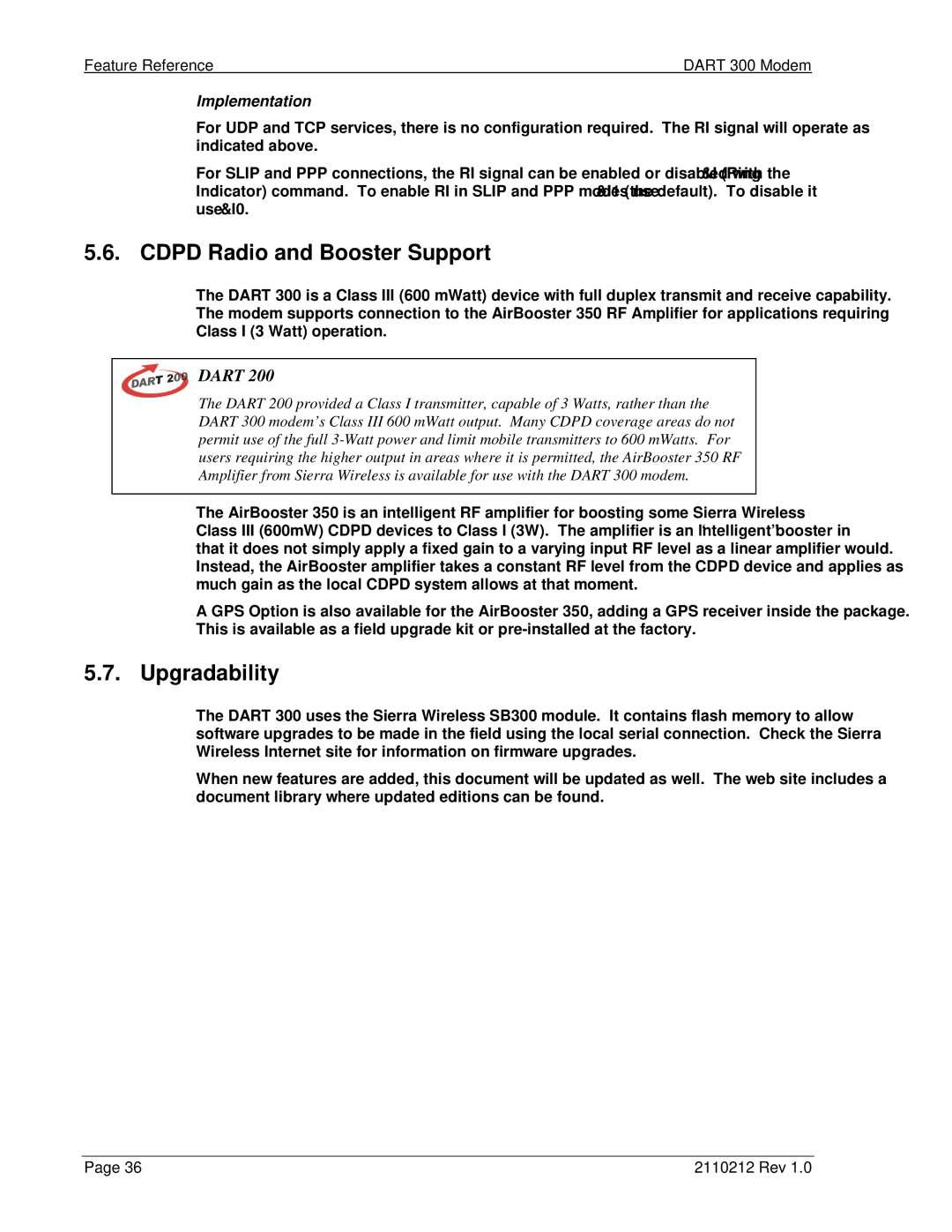
Feature Reference | DART 300 Modem |
Implementation
For UDP and TCP services, there is no configuration required. The RI signal will operate as indicated above.
For SLIP and PPP connections, the RI signal can be enabled or disabled with the &I (Ring Indicator) command. To enable RI in SLIP and PPP modes use &I1 (the default). To disable it use &I0.
5.6. CDPD Radio and Booster Support
The DART 300 is a Class III (600 mWatt) device with full duplex transmit and receive capability. The modem supports connection to the AirBooster 350 RF Amplifier for applications requiring Class I (3 Watt) operation.
DART 200
The DART 200 provided a Class I transmitter, capable of 3 Watts, rather than the DART 300 modem’s Class III 600 mWatt output. Many CDPD coverage areas do not permit use of the full
The AirBooster 350 is an intelligent RF amplifier for boosting some Sierra Wireless
Class III (600mW) CDPD devices to Class I (3W). The amplifier is an “intelligent” booster in that it does not simply apply a fixed gain to a varying input RF level as a linear amplifier would. Instead, the AirBooster amplifier takes a constant RF level from the CDPD device and applies as much gain as the local CDPD system allows at that moment.
A GPS Option is also available for the AirBooster 350, adding a GPS receiver inside the package. This is available as a field upgrade kit or
5.7. Upgradability
The DART 300 uses the Sierra Wireless SB300 module. It contains flash memory to allow software upgrades to be made in the field using the local serial connection. Check the Sierra Wireless Internet site for information on firmware upgrades.
When new features are added, this document will be updated as well. The web site includes a document library where updated editions can be found.
Page 36 | 2110212 Rev 1.0 |
